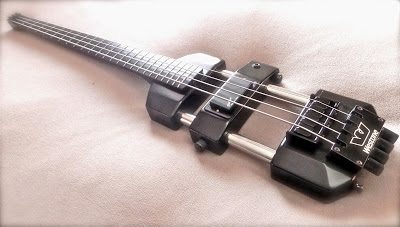I recently watched the Criterion Collection's blu-ray release of director Nicholas Ray's near horror, BIGGER THAN LIFE (1956), and was impressed not only by the wonderful transfer of this Deluxe Color CinemaScope production, but also by its broad critique of suburbia, consumerism ("What did you get me?"), our predominantly patriarchal society, and the smothering of any sort of meaningful creativity.
"So are we. You are, I am. Let’s face it we’re dull. Can you tell me one thing that was said or done by anyone here tonight that was funny, startling, imaginative?”
Christianity and education also take quite the beating here, generally for the conformity and conservatism served up by each. Obviously, all of this seemed quite shocking and inappropriate at the time. The film is particularly prescient in its treatment of prescription drug addiction, as the film itself was inspired by an article on the subject that had appeared in The New Yorker in 1955 and is even more relevant today. James Mason is chilling as the mild-mannered school teacher (Ed Avery), whose life is turned upside down by the jolting pains that are only quelled by an experimental and highly addictive drug (cortisone) that quickly turns him in to a self-righteous, erratic, and horribly "truthful" father and husband. Their house seems to scream as Ed has an attack at the front door on the way to the hospital, his hand grabbing for balance only to find his paroxysm of pain amplified in the tortured cry of the doorbell. Barbara Rush plays wife Lou Avery, a typical 50's wife with little self-esteem and plenty of self-sacrifice. Speaking of sacrifice, Christopher Olsen's performance as son Richie Avery (very much the bound Isaac to father Abraham in the Biblical sense) is a revelation of discomfort, skittishness, as well as a building anti-authoritism (a kind of stand in for Nicholas Ray and a young generation about to explode). Ultimately, this is a movie about pain (physical, emotional), those unwelcome guests that stay no matter how intensely ignored, and cannot be medicated away in any real sense. It is also about a toxic environment, which in this case is suburbia as experienced through the machinations of the nuclear family. Ray is at his expressionist best here, giving life to ominous shadows and unease to his camera's perspectives. There is seemingly a happy ending here that defies the reality of Ed Avery's dire heath concerns, and brings us right back to those unuttered words, pain and the NEED to medicate.
"So are we. You are, I am. Let’s face it we’re dull. Can you tell me one thing that was said or done by anyone here tonight that was funny, startling, imaginative?”
Christianity and education also take quite the beating here, generally for the conformity and conservatism served up by each. Obviously, all of this seemed quite shocking and inappropriate at the time. The film is particularly prescient in its treatment of prescription drug addiction, as the film itself was inspired by an article on the subject that had appeared in The New Yorker in 1955 and is even more relevant today. James Mason is chilling as the mild-mannered school teacher (Ed Avery), whose life is turned upside down by the jolting pains that are only quelled by an experimental and highly addictive drug (cortisone) that quickly turns him in to a self-righteous, erratic, and horribly "truthful" father and husband. Their house seems to scream as Ed has an attack at the front door on the way to the hospital, his hand grabbing for balance only to find his paroxysm of pain amplified in the tortured cry of the doorbell. Barbara Rush plays wife Lou Avery, a typical 50's wife with little self-esteem and plenty of self-sacrifice. Speaking of sacrifice, Christopher Olsen's performance as son Richie Avery (very much the bound Isaac to father Abraham in the Biblical sense) is a revelation of discomfort, skittishness, as well as a building anti-authoritism (a kind of stand in for Nicholas Ray and a young generation about to explode). Ultimately, this is a movie about pain (physical, emotional), those unwelcome guests that stay no matter how intensely ignored, and cannot be medicated away in any real sense. It is also about a toxic environment, which in this case is suburbia as experienced through the machinations of the nuclear family. Ray is at his expressionist best here, giving life to ominous shadows and unease to his camera's perspectives. There is seemingly a happy ending here that defies the reality of Ed Avery's dire heath concerns, and brings us right back to those unuttered words, pain and the NEED to medicate.



















